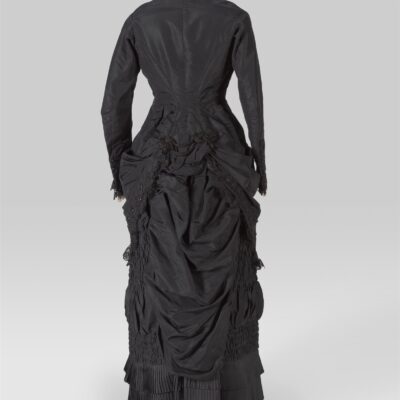The image shows a Justillo or Coteta – Spanish name indicating a corset – made of pink silk ottoman, probably from Valencia. The item is short and very tight, with front tips, eight fins and a back tip, known as foxtail (rabo de zorra). The silk is worked with metallic thread, forming a design of floral baskets, birds with spread wings and branches. The seams are covered with golden trimmings. The justillo presents whalebones secured to the fabric and the canvas of the lining through stitches, so that each whale is both flexible and fixed. The justillo closes on the front, with a row of five eyelets in which to pass a cord and presents two openings – sort of small caps or wings – at the height of the nipples.
The story that the materiality and construction of this justillo is very interesting for several reasons.
It is among the few popular garments – meaning not from a court, but from the lower classes – dating back to the first half of the nineteenth century that arrived in the Museo del Traje in Madrid. It is especially rare also to find a popular garment with even partial embellishments: although patterns taken from the urban fashion bodices of the late eighteenth or nineteenth centuries kept well into the twentieth century, popular upper garments did not tend to be embroidered.
This justillo is exceptional also because its form talks about the acts that could be performed wearing it: it is a mother’s nursing garment, with the appropriate openings to breastfeed the baby. the item might look contradictory to contemporary eyes: on one side, the tight fit and the whalebones structuring it, on the other the openings allowing the wearer to fulfill the natural function of breastfeeding without giving up wearing a garment inspired by the canons of fashion.
